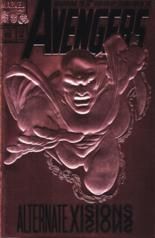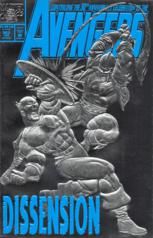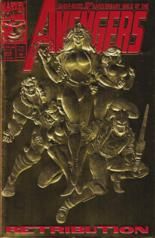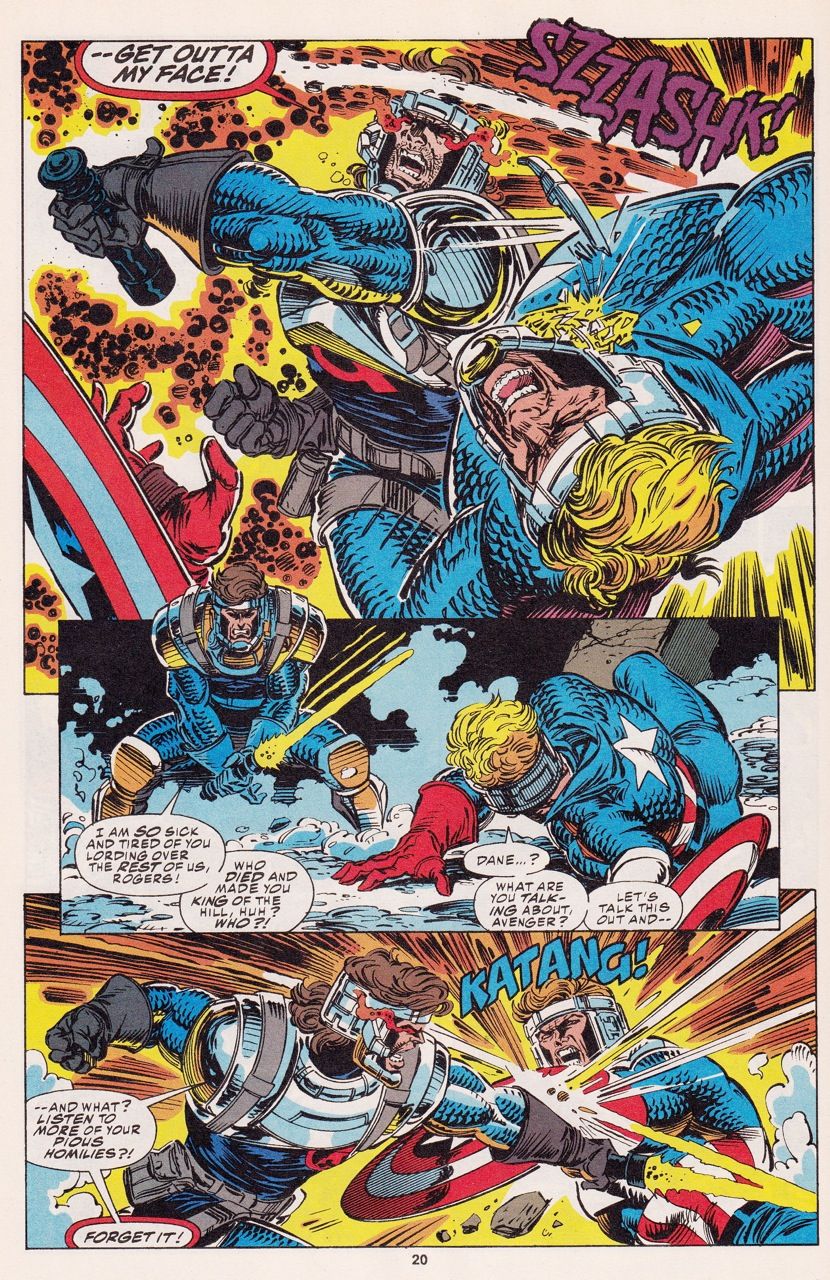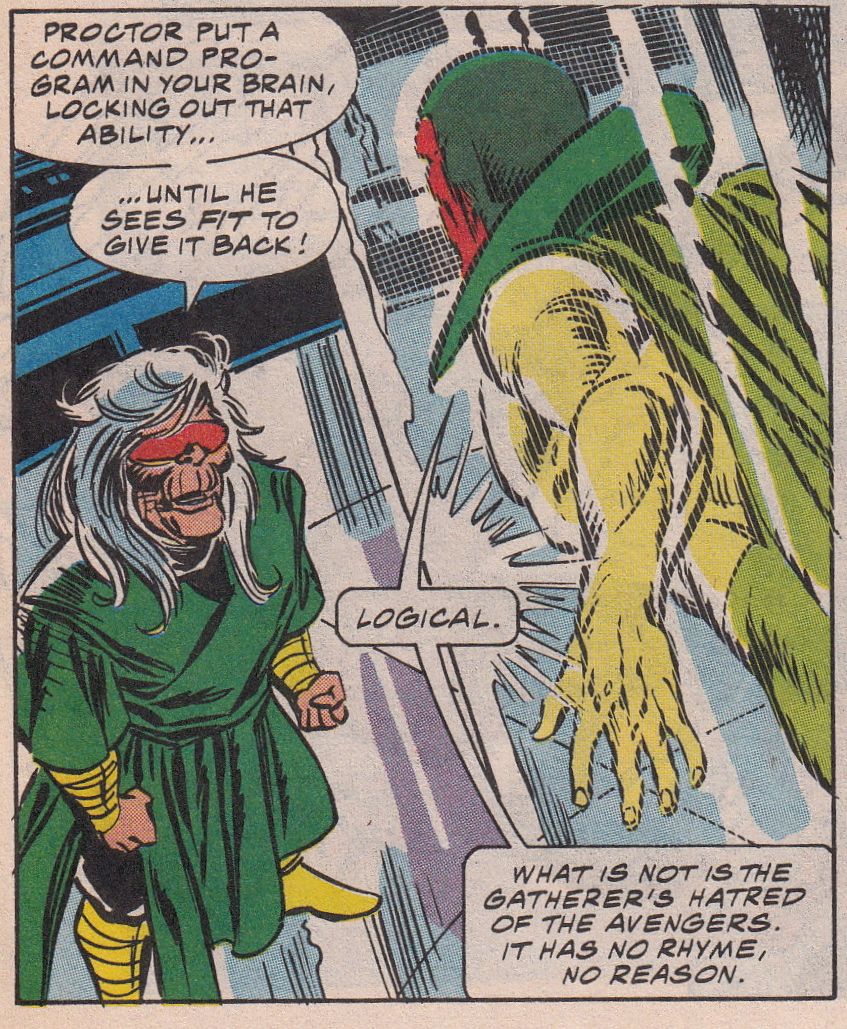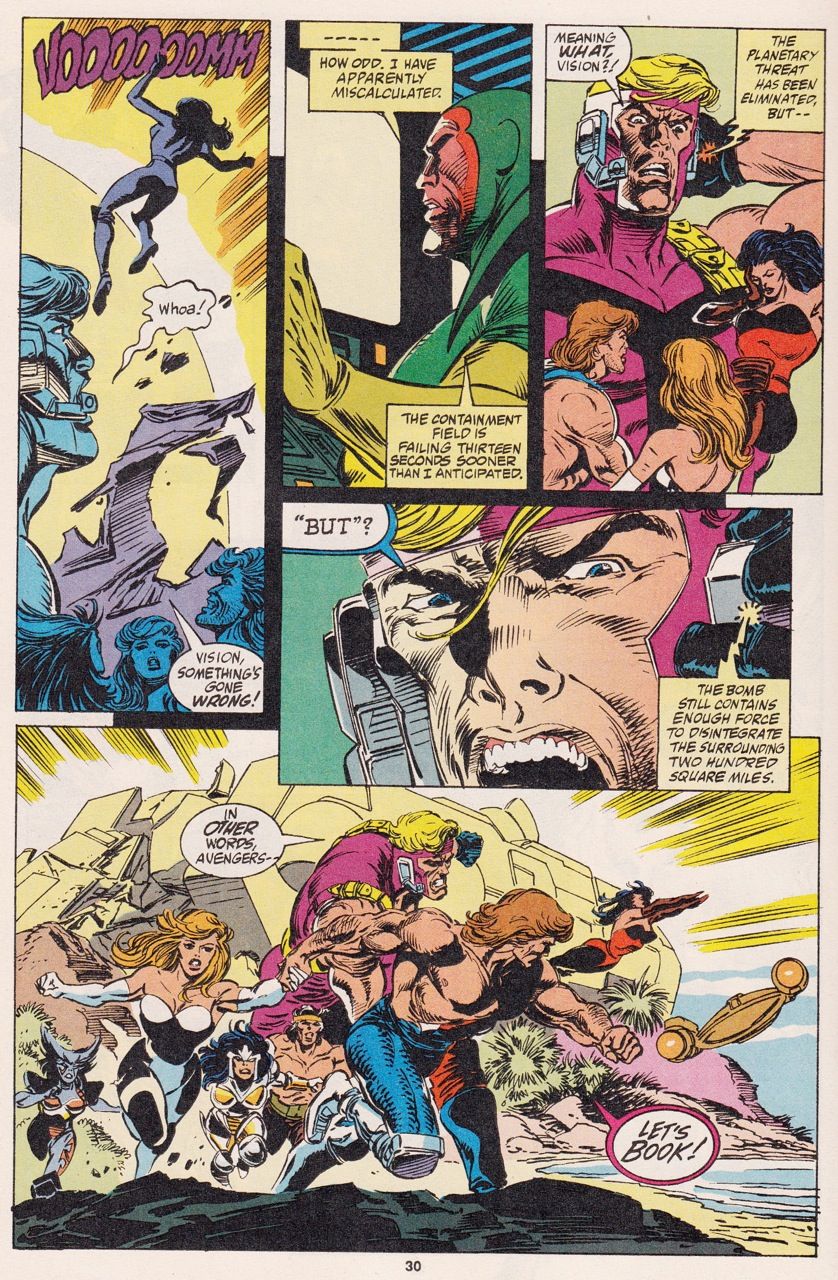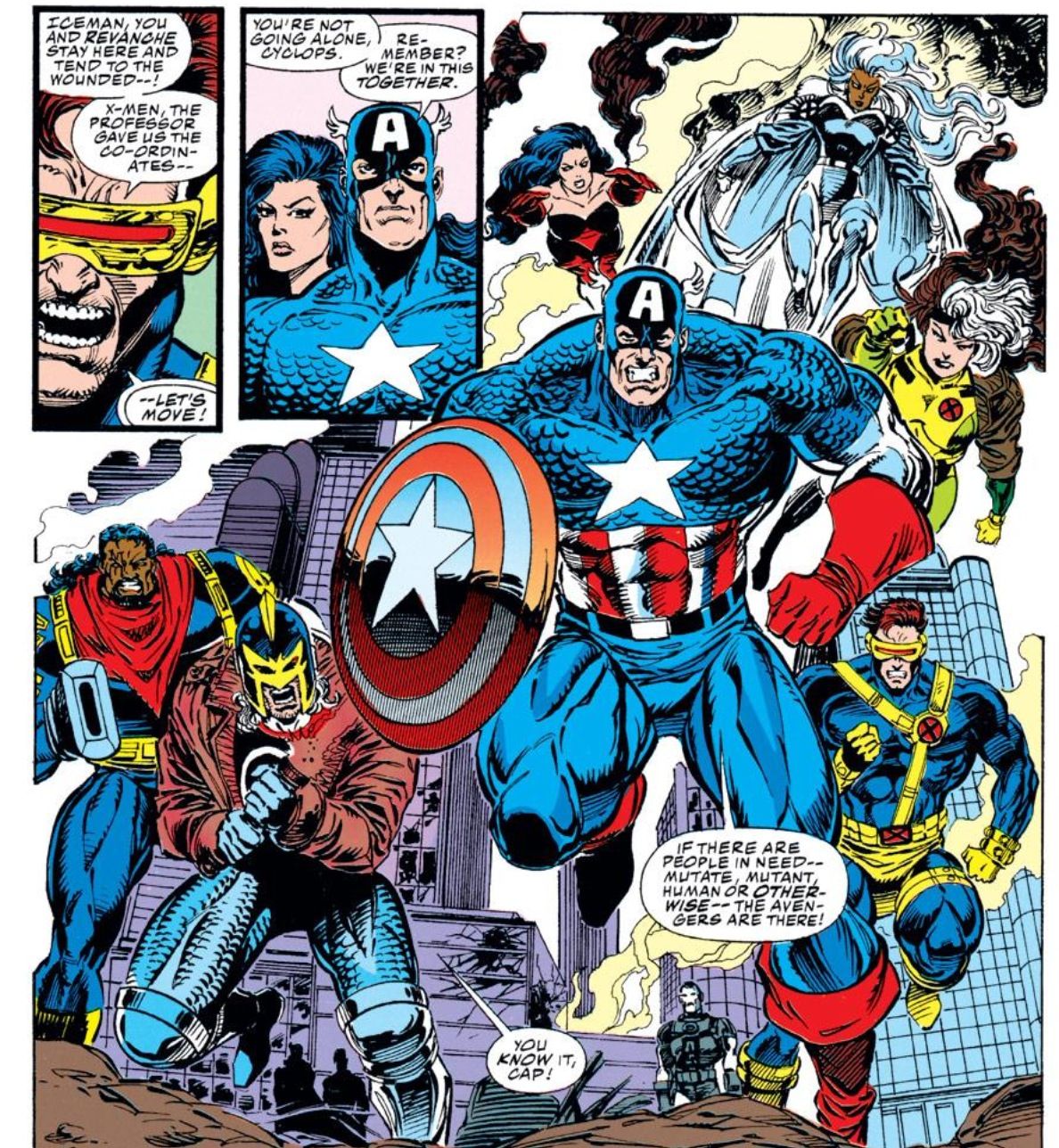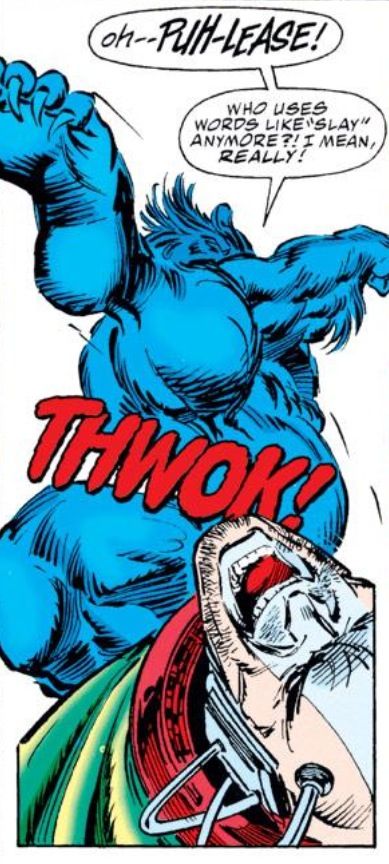In this column, Mark Ginocchio (from Chasing Amazing) takes a look at the gimmick covers from the 1990s and gives his take on whether the comic in question was just a gimmick or whether the comic within the gimmick cover was good. Hence "Gimmick or Good?" Here is an archive of all the comics featured so far. We continue with 1993's four chromium embossed covers the Avengers' 30th anniversary...
Avengers #360, 363, 366 and 369 (published March, June, September and December, 1993) – script by Bob Harras, pencils by Steve Epting (w/Jan Duursema for #369), inks by Tom Palmer
With CSBG recently naming its 50 greatest Avengers stories in honor of the 50th anniversary of “Earth’s Mightiest Heroes,” I thought it was apropos for “Gimmick or Good?” to take a look at 1993’s 30th anniversary Avenger specials. To mark this special occasion, Marvel did something I’ve always found to be a little curious. The company published four special bronze, silver and gold foil embossed covers throughout the year, but the selected comics were spaced three issues apart numerically and the storylines didn’t cleanly connect with each other (especially Avengers #369, which was a tie-in to “Bloodties,” an Avengers/X-Men arc). I’m going to attempt to review these issues as one lump sum, so please forgive the brevity of analysis the individual issues receive (lest you want me to spill 2,500-3,000 words on 90s Avengers comics).
So what about inside these comics?
Of the four issues, #360 and #363 are the only two connected by the same arc, “The Gatherers” storyline (ranked 29th by the readers of CSBG),which deals with the villain Proctor, an alternate version of the Black Knight who had fallen in love and was spurned by Sersi, launching an attack on the Avengers by abducting Vision and switching his artificial mind into another Vision from an alternative universe (and thus sending the new Vision out to ambush the unknowing Avengers). Issue #363 shows the Avengers team gaining access to Proctor’s Citadel in the Andes Mountains in an attempt to rescue Vision.
The arc also spotlights the Avengers dealing with Sersi’s mental instability, who is unknowingly being controlled by Proctor, causing her to physically attack her boyfriend, Black Knight, and the rest of her Avengers teammates. Knight eventually has the same problem keeping control after mentally syncing up with Sersi, and attacks Captain America during the Avengers’ battle with Proctor.
Speaking of Cap, in a moment befitting a “special” anniversary issue, #360 also marks his official return to the Avengers, who went on hiatus after his teammates defied him and assassinated the Kree Supreme Intelligence during the Operation Galactic Storm arc.
And speaking of the Krees and Galactic Storm, Avengers #366 revisits the fallout from the storyline when a couple of Kree militants bent on getting revenge for the murder of the Supreme Intelligence threaten to detonate a Nega Bomb on Earth.
Avengers #369 strays the farthest from the pack as a tie-in to the “Bloodlines” X-Men Avengers arc, which is when Magneto’s protégé Exodus kidnaps Quicksilver and Crystal’s daughter Luna. This issue has cameos galore as both the full line-up of the Avengers, X-Men and even some members of S.H.I.E.L.D. attempt to take down Exodus.
It really wouldn’t be fair of me to criticize these four issues for lacking any real cohesion with each other, despite the fact that I still don’t get why Marvel would have four foil embossed covers equally spaced out from each other, but not be part of the same storyline. With that said, while admitting I’m not exactly well-versed in my early 90s Avengers comics, it does seem that the post-Galactic Storm run/Bob Harras run of issues was a weak period for the title.
The Avengers team is really lacking star power at this point, with storylines focusing on more B-list members like Black Knight, Sersi and Crystal. There are a couple of fun character moments for those three, and certainly some entertaining ones for the few remaining classic team members, like when Vision discovers in #360 that he has been stripped of his power to turn intangible and he only response is a Spock-ian “logical.”
But overall, outside of Cap’s return, there are very few moments in these four comics that would grab me as a reader and make me want to shell out $3 for an anniversary comic (and reportedly Marvel didn’t even offer a non-foil/cheaper version of these comics as they often did with their other gimmick covers).
It’s not like Harras doesn’t try and tell some good stories here – there’s certainly an “epic” feel to the events in issues #366 and #369. But in the case of #366, it feels too much like Galactic Storm redux without really matching the story and its tension and drama during its final few chapters. That comic also stretches my suspension of disbelief to comical levels when we are led to believe that the Avengers are able to travel 200 square miles in 13 seconds in order to avoid being disintegrated by an (albeit weakened) Nega Bomb blast. Apparently the writers of Batman: Dark Knight Rises were taking notes when they were coming up with an ending for their movie (whoops, *spoiler alert*).
Avengers #369 certainly gives you some bang for your buck in terms of characters used – but it’s a case of overkill. Just too many X-Men and too many Avengers competing for screen time for anyone to make a worthwhile impact. The end result is a slog of an issue with some rushed artwork to boot (check out Captain America’s neck in this image).
You can tell Harras definitely has a love affair for the Black Knight as after starring in “The Gatherers” arc, he gets another big “moment” in “Bloodlines” by delivering the knockout blow to Exodus (after the villain is distracted by some psychic interference from Professor X).
Still, even by double-sized issue standards, characters like Beast, War Machine and Gambit were just shoe-horned in, delivering an inconsequential but quippy one-liner (including one by Beast that embodies a pet peeve of mine: when a writer makes fun of his own dialogue through one of his characters. In this case, Beast calls out one of the villains for saying “slay.” If you think your dialogue is silly enough that one of your characters can comment on it, you probably need to come up with better dialogue, or at least, more subtle jokes about it).
I’m going to guess that fans of Harras’ work on the Avengers are going to tell me I’m being unfairly critical of these comics, but in my defense, I’m going to fall back on a tried by true mantra of mine for “Gimmick or Good?” You have to remember that these comics were marketed with gimmick covers in order to bring in casual readers and to hopefully hook them for non-gimmick issues in the future. As someone who didn't religiously read Avengers comics during this era, I can’t say I was that impressed by any of these issues 20 years later. The interesting character moments were few and far between, and any of the villains they squared off against (not named Proctor) lacked any real punch (plus they orated like Bond villains).
Verdict: #360/363: Good
#366/369: Gimmick


